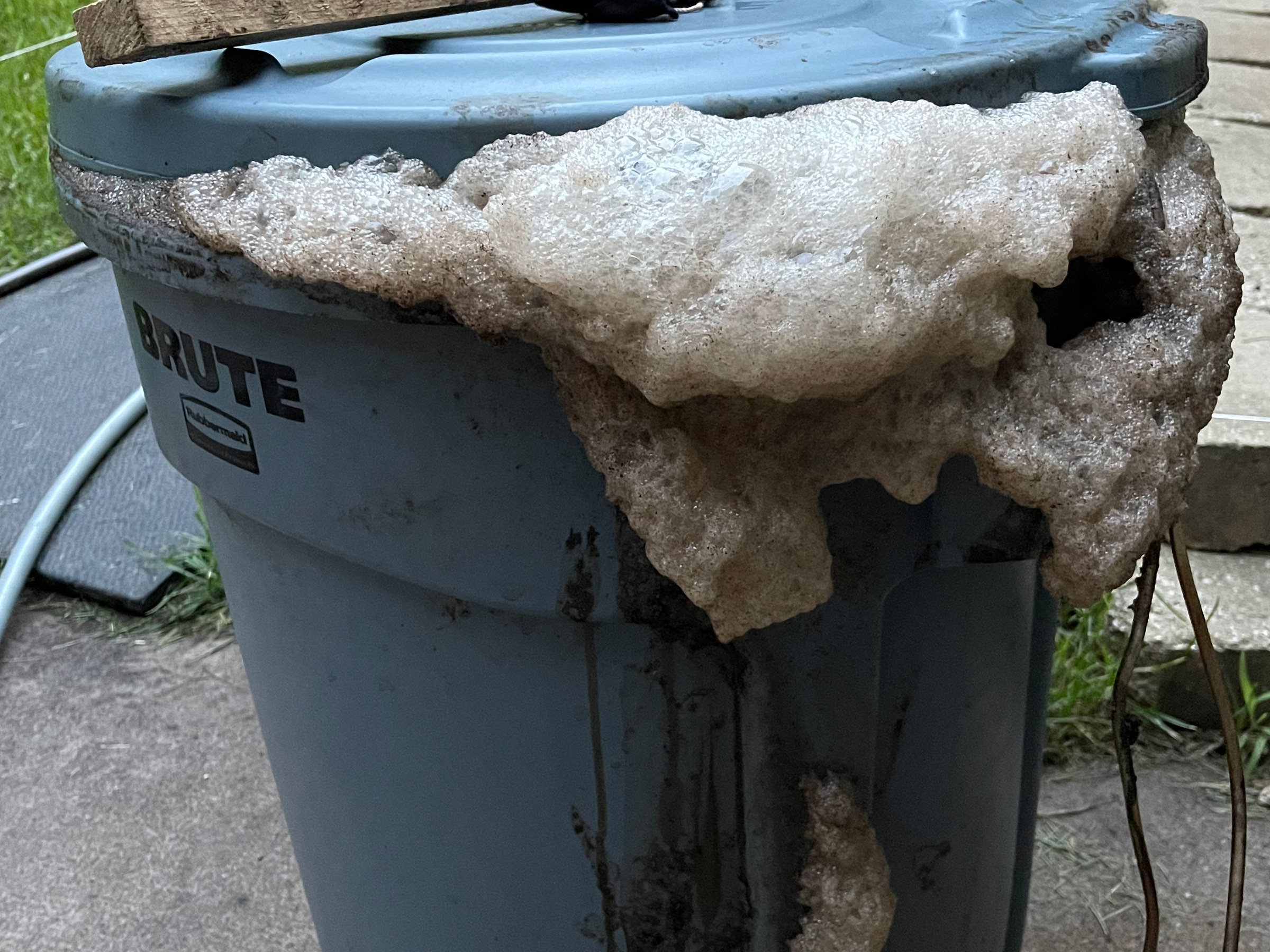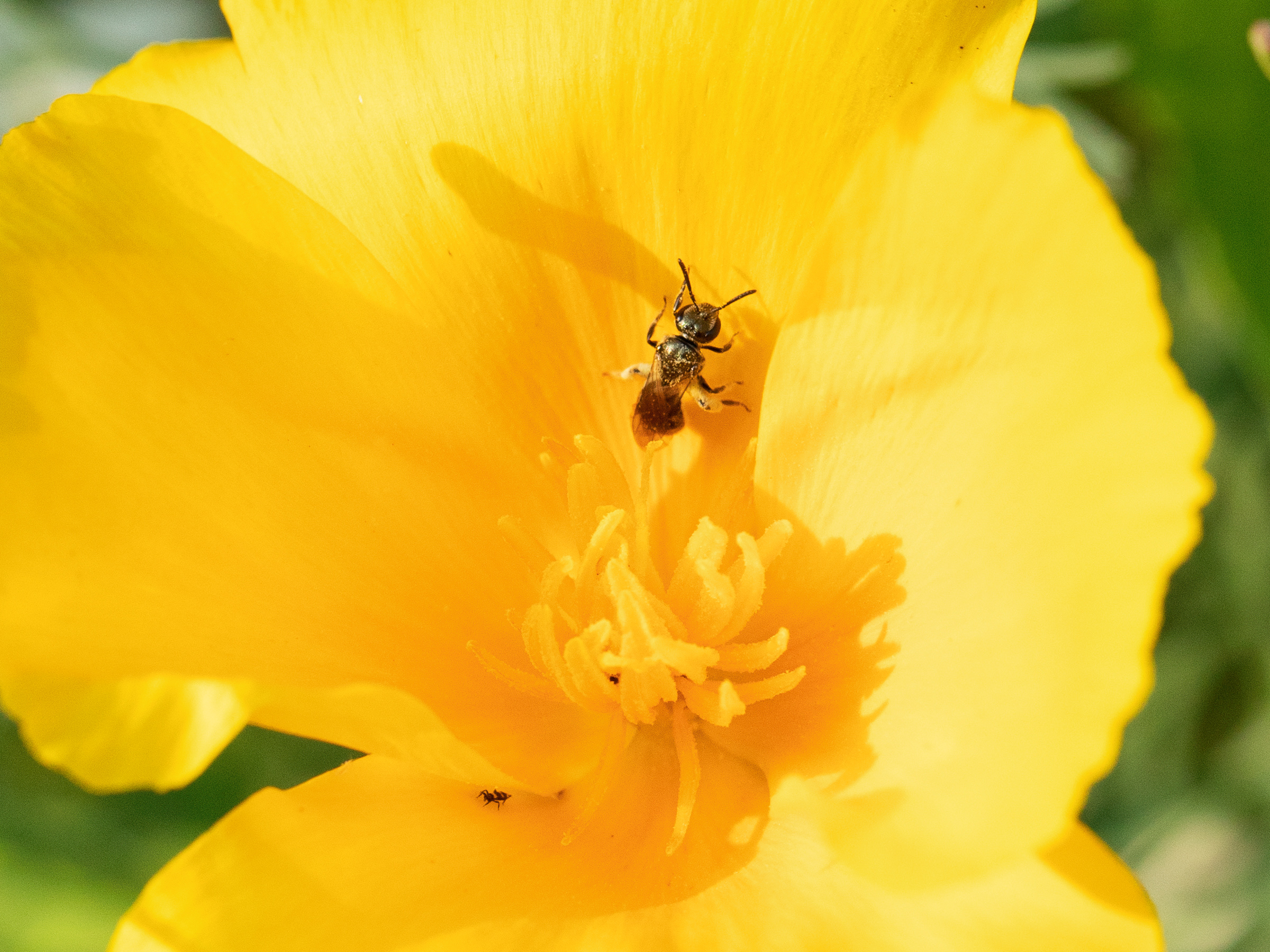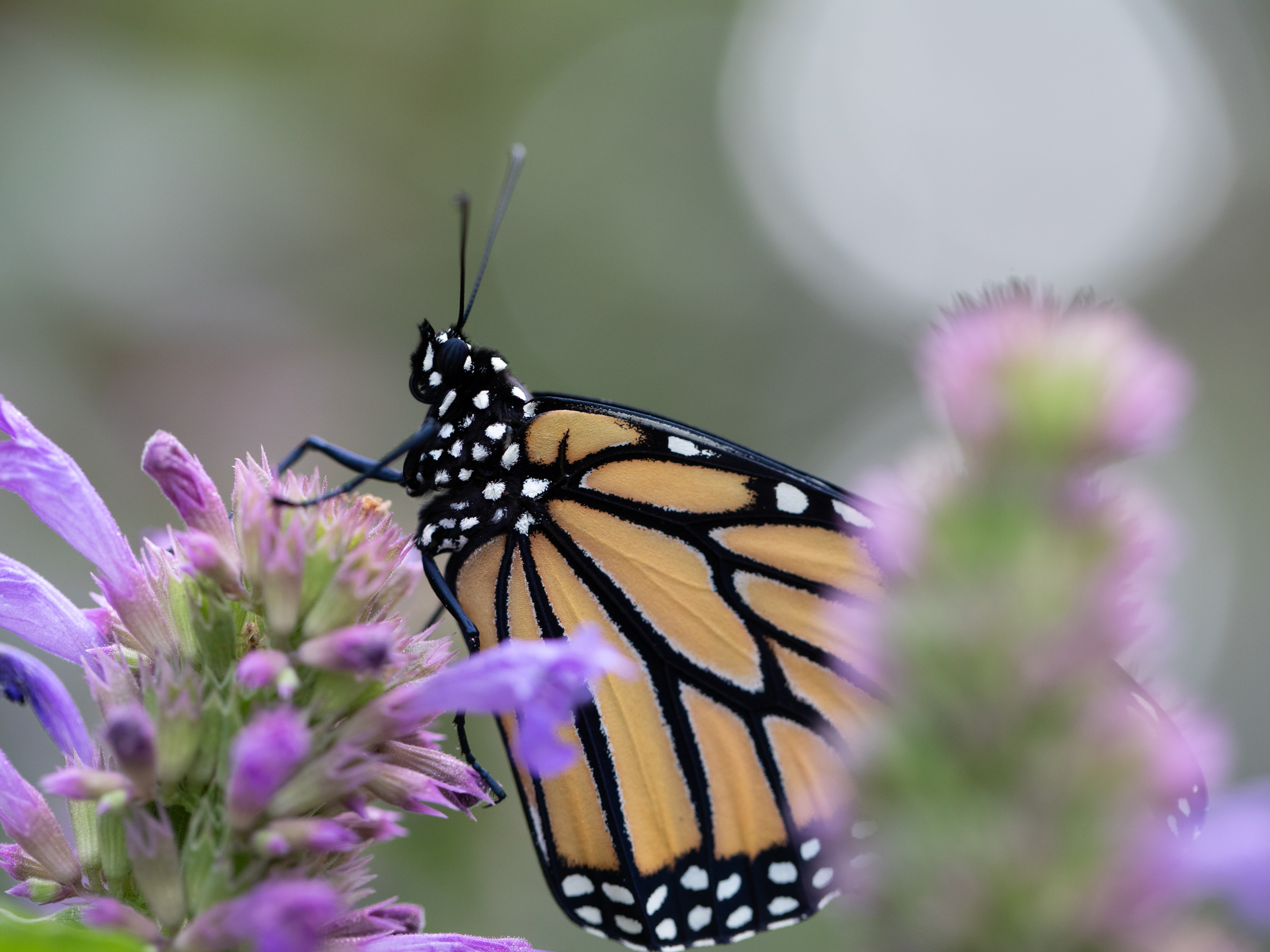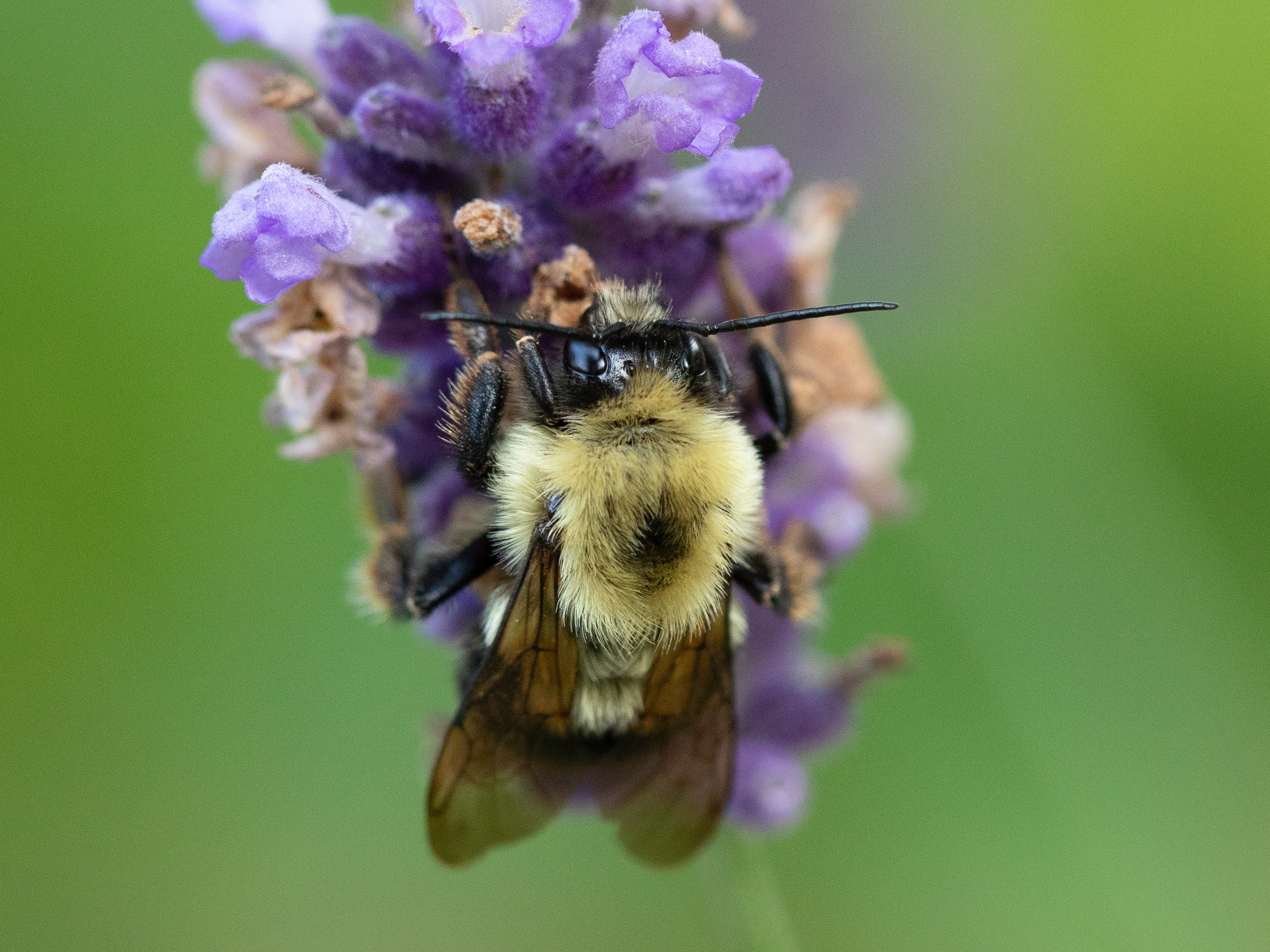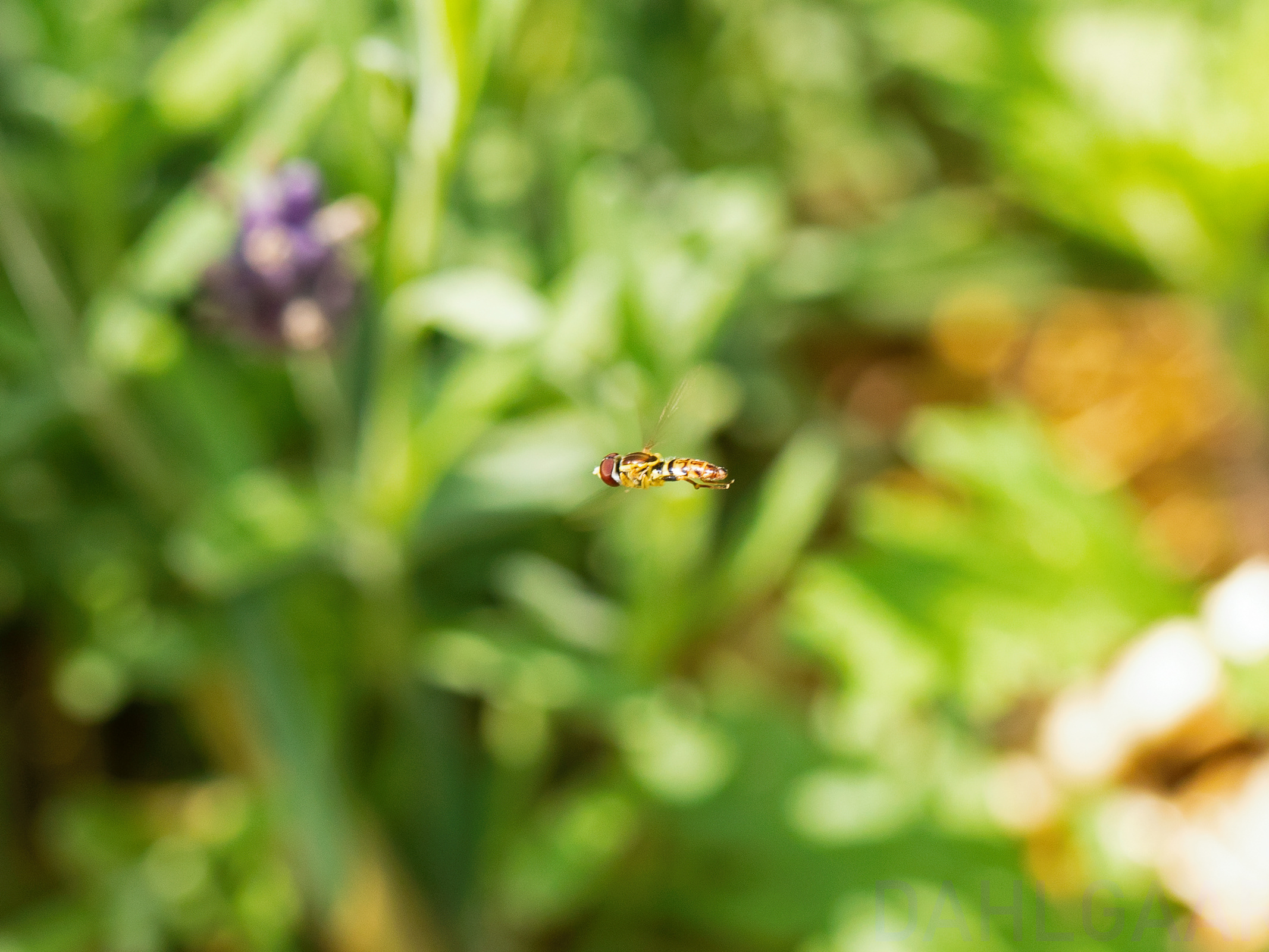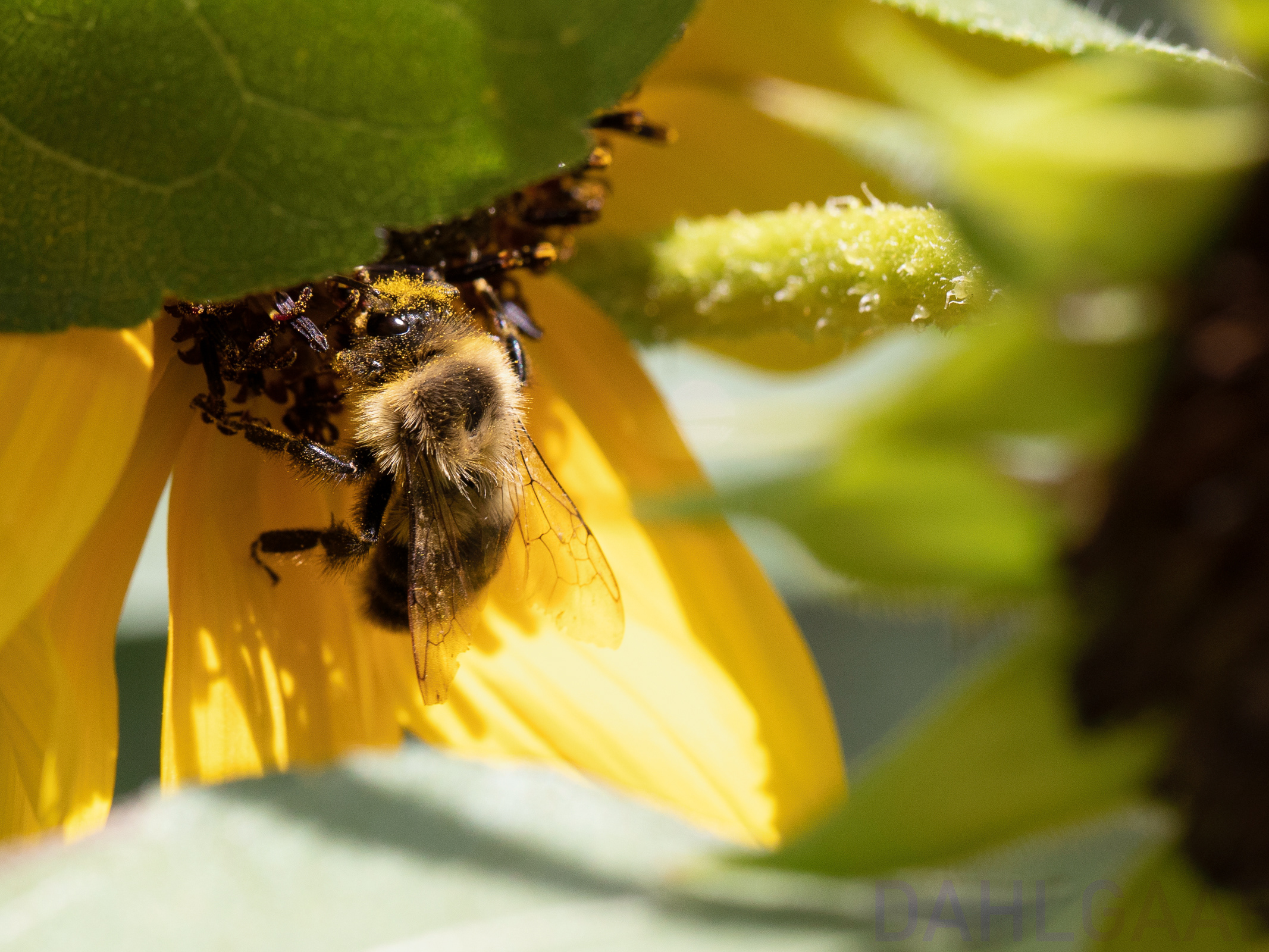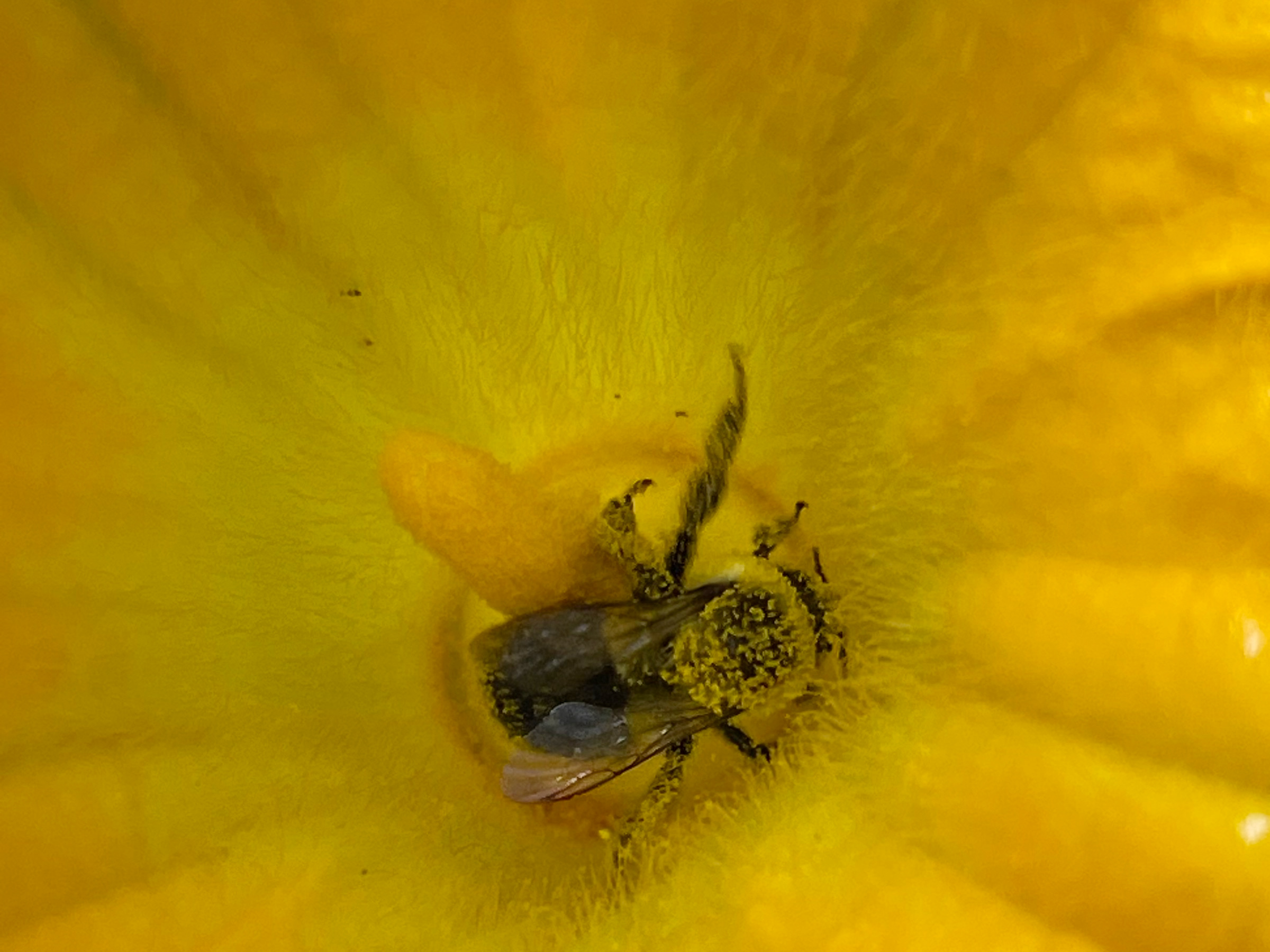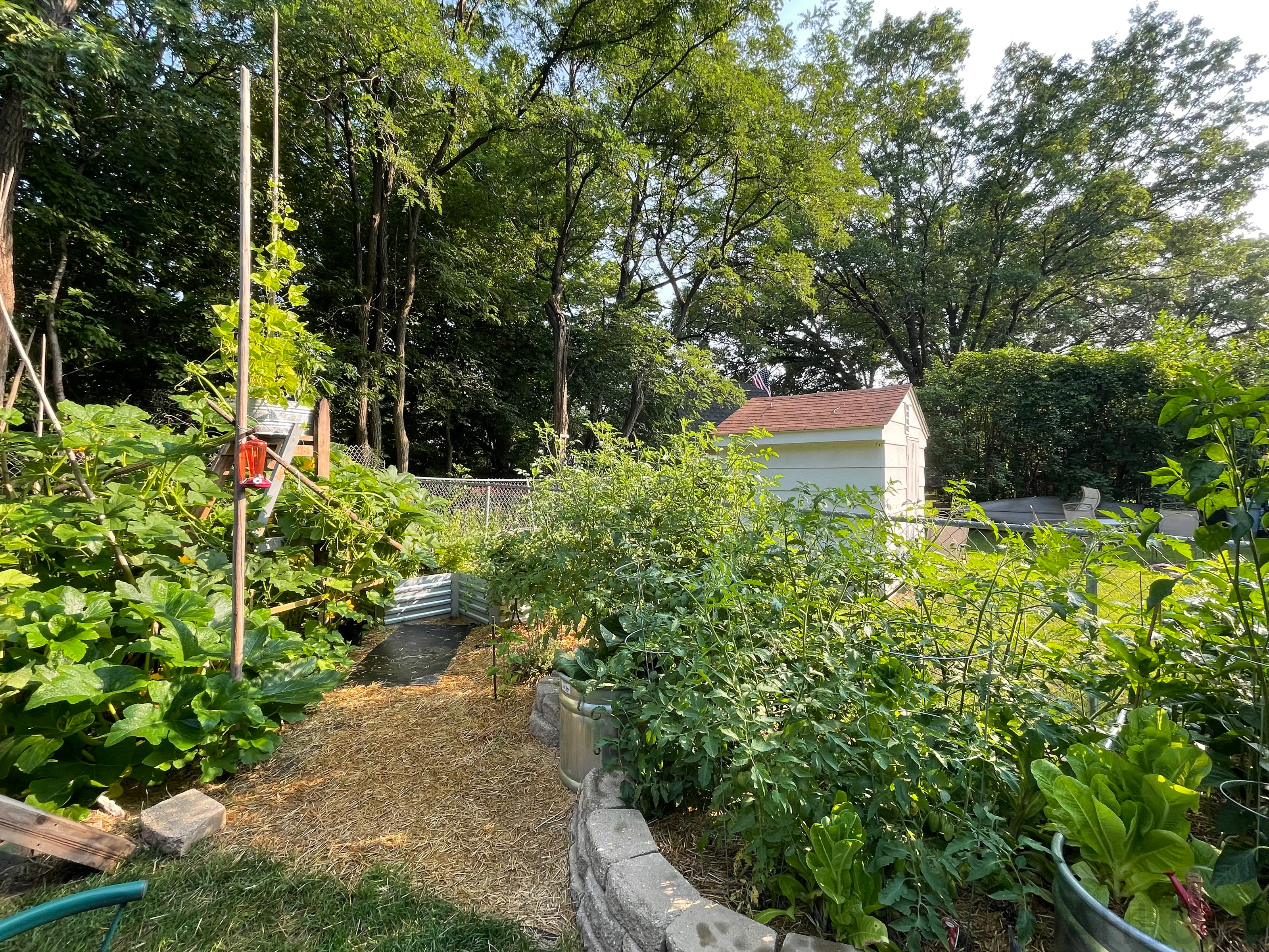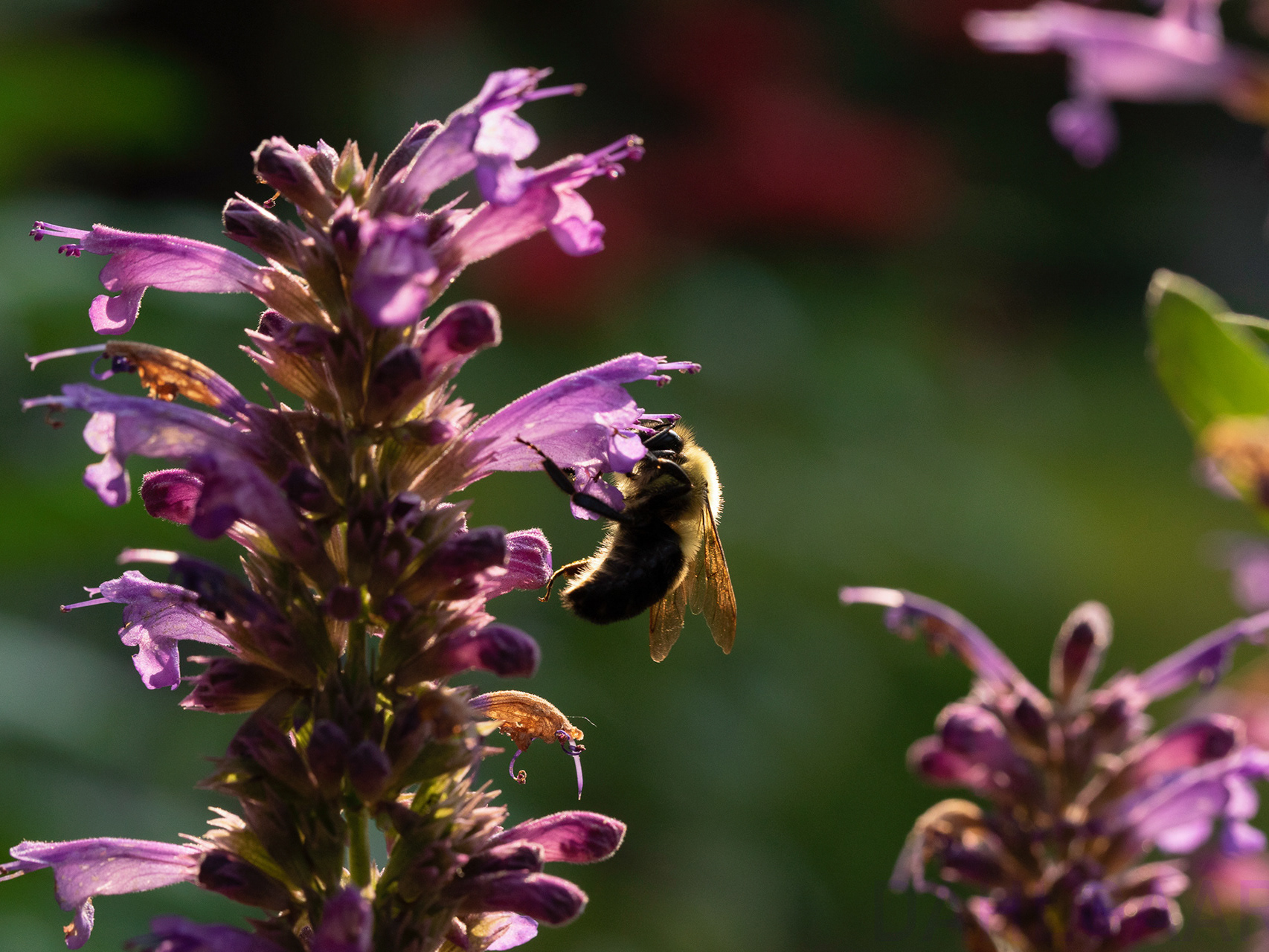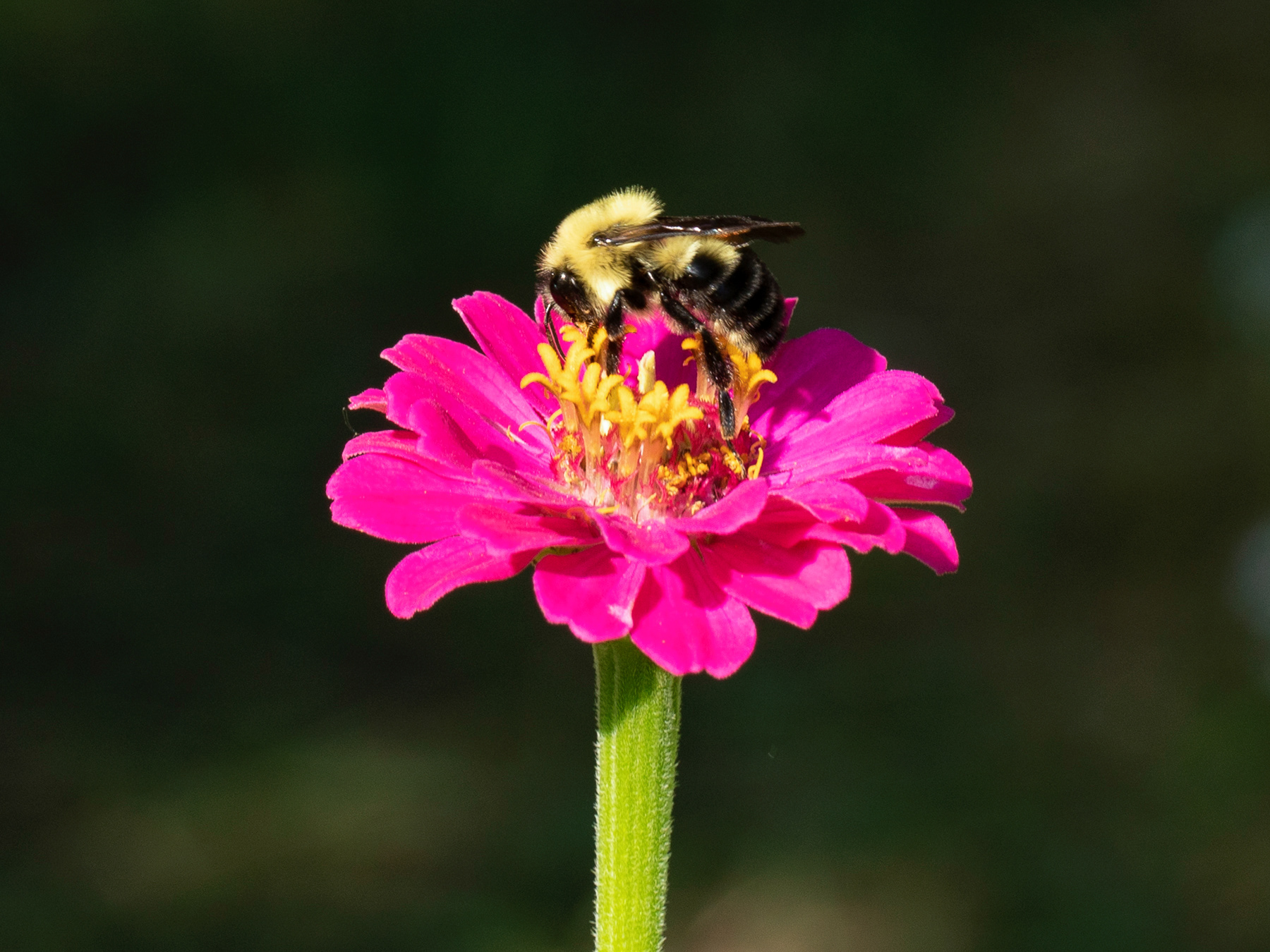Our first step was to chart the sun's path. Our neighborhood is heavily wooded so it took a compass, a watch, and some patience to get things laid out properly. There is a small stream and wetland behind the homes in the photo, less than 100 yards away.
I was listening to a story about bees on Minnesota Public Radio 91.1FM when this fuzzy little buzzer caught my eye. I decided to follow her.
She led me around the garage where I discovered several bees moving in and out of our leaf waste and twigs.
After looking around some more, I also found bumble bees in our wood chips. It helps to know what you're looking for. They're discreet and they're unexpectedly agile, for grapes with wings.
Many bees use animal burrows and holes to nest. I was planning on getting rid of the beetles that attract so many moles to our property, but that plan is off the table. The new approach required a little adjustment of expectations, but it's healthier than an intervention. The owls appreciate it too.
When I learned that some bees like clumping grasses we immediately added Blue Fescue. It's easy to find. I'll be checking it closely for activity.
Our yard has a couple cool shaded areas that generally stay damp all season. These locations, about 20 yards from the thermal mass, often produce handy little pockets of mud too.
Our friendly neighbor shared some of his Scarlet Bee Balm with us. We were able to start feeding the bees and pollinators right away. The native variety that we ordered takes 2 years from seed to flower. We really appreciated his help. His Bee Balm patch is probably has something to do with the great response we received from the bees.
We ordered pink Monarda Fistulosa seeds from a native prairie restoration co-op. Their germination rate was awesome, the plants are hardy, and they appear to be pest and disease resistant too. Powdery mildew got them late in the fall but it didn't seem to hurt the plants at all as they were already going dormant.
Several fabric air pots were used for planting the first year of growth. Pro tip: leave an air gap below the pots if you don't want them firmly rooted to the ground. I wont't make that mistake again.
The eastern face of our pollinator garden was seeded with a wide variety of pollinator favorites. There was something for everyone, even the butterflies, birds, and squirrels.
Shelly used an iPhone app to keep ahead of the weeds. She was able to make sure that nearly everything on our pollinator mound was supposed to be there. Her efforts paid off big time!
The mound is asymmetrical with an irregular border to increase the surface area of the edge spaces. Boundaries are where the interesting stuff tends to happen.
Having so many different types of plants can make watering complicated. We primarily used a drip hose under the straw mulch and then hand watered individual plants when necessary.
The Northeast (left) side of the mound became an enormous, long lasting buffet of small sweet blooms and tasty seed producing flowers.
Anise Hyssop
Butterfly Bush
Salvia
Orange Tick Seed
We planted one of our sunflowers and a bird or squirrel planted the other. We did not expect ours to grow over 10' tall.
Evening Primrose
Evening Primrose is a big beautiful example of mathematics.
We are working to create self sustaining islands of native plants across the yard. The remaining space in the front lawn will be reserved for walking paths and bee lawn.
Purple Liatris
White Liatris
Native Prairie Fire
Pollen delivery dabber on Native Prairie Fire
Building a thermal mass with concrete and sticks to provide a varied surface that will change temperature more slowly than the surrounding area. It should work well for insects building nests or for helping them regulate their body temperature.
The sticks pass through the concrete into the sandy soil below. When they eventually decay we'll have cool holes that throw neat shadows and are fun to peek through.
Bees and insects were using it on day one.
It was a cool morning and our chilly bee friend needed to warm up.
I don't know how long she was hanging there, but I sat with her for at least 30 minutes.
She started to fidget as the sun rose higher and the air temperature increased.
Once she had warmed up enough, she launched herself into the air suddenly and flew right over my head. She was off to enjoy the last remaining blooms of the season. She didn't pay any attention to Mr. Grasshopper warming up on rough edge of her perch.
The thermal mass is the first step in our sand and gravel mud feature.
We had good snow cover for most of the winter. The little mammals took advantage of the protection... and we now have more mammal holes than ever. Laying down 50 bags worth of lawnmower mulched leaves under the maple tree may have helped contribute to their success.
Unbeknownst to me, Shelly was documenting my documentation whilst I was documenting it.
I'm not the only turkey in the yard.
